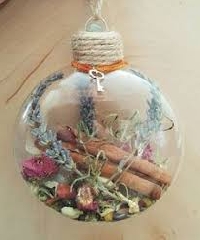Witch Ball Swap
Launch gallery slideshow

| Swap Coordinator: | blueseabliss (contact) |
| Swap categories: | Crafts |
| Number of people in swap: | 7 |
| Location: | Regional - USA |
| Type: | Type 3: Package or craft |
| Last day to signup/drop: | September 15, 2017 |
| Date items must be sent by: | September 22, 2017 |
| Number of swap partners: | 3 |
| Description: | |
|
For this swap you will make and send one witch ball to your 3 partners. Please note that the use of plastic rather than glass is encouraged...otherwise pack appropriately. A broken witch ball is not a good thing. Write a note of blessing and enclose it in your package with the name of the swap and your name for rating purposes. Blessed be. WHAT IS A WITCH BALL??? A witch ball (or friendship ball) usually refers to a hollow sphere of plain or stained glass hung in cottage windows in 18th Century England to ward off evil spirits, witch's spells or ill fortune. It originated, though, in an earlier culture where witches were considered a blessing, and these witches would “enchant†the balls to enhance their potency against evils. According to folk tales, witch balls would entice evil spirits with their bright colours, and the strands inside the ball would then capture the spirit and prevent it from escaping. The witch bottle is a very similar concept. Traditionally, witch balls were green or blue in colour (although other colours were also used) and made from glass (although some were also made of wood, grass or twigs), and often measured as large as 7 inches (18 cm) in diameter. Often they were striated or decorated with enamelled swirls and brilliant stripes of various colours. Later, they were often posted on top of a vase or suspended by a cord (from the mantelpiece or rafters, for example) for a decorative effect. The modern Christmas ornament ball is probably descended from the witch ball and, according to some stories, the ornament was originally placed on the tree to dispel a visitor’s envy at the presents left beneath the tree. Witch balls appeared in the gardens of America in the 19th Century, where they were usually known as “gazing ballsâ€, and were often silver in color, acting as convex mirrors and warding off evil by reflecting it away. | |
Discussion
Leave a Comment
You must be logged in to leave a comment. Click here to log in.
- Info:
- Home
- |
- About
- |
- Forum Rules
- |
- Terms of Use
- |
- Press
- |
- Advertising
- |
- Blog
- |
- Graphics & Stuff
- Help:
- New User Info
- |
- FAQ
- |
- Group Info
- |
- Glossary
- |
- Forums
- |
- |
- Contact Admin

